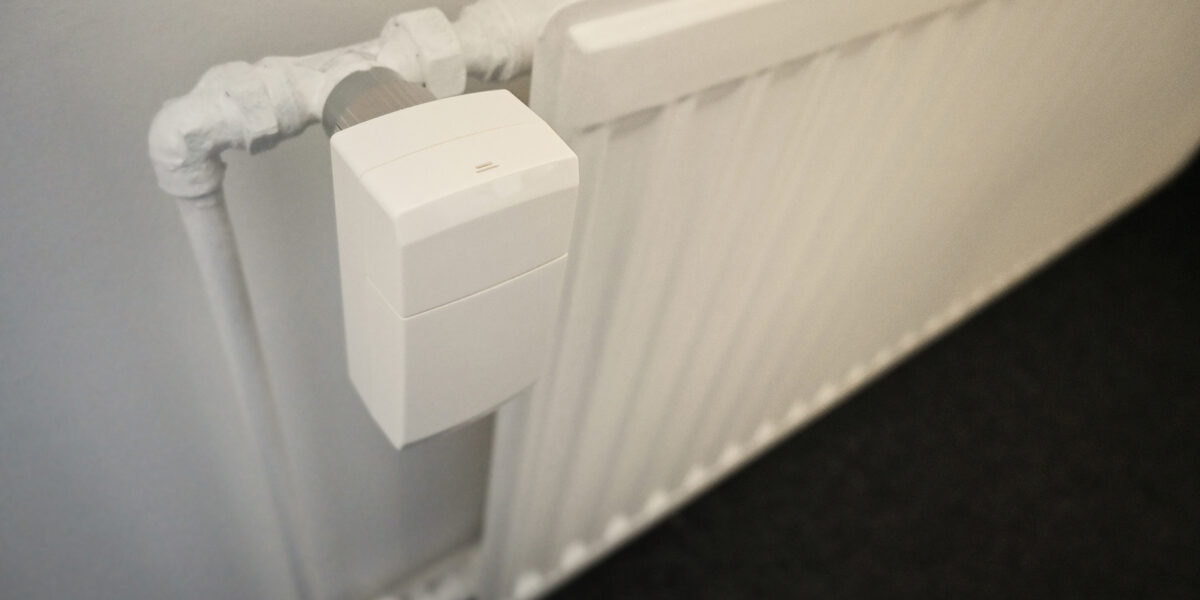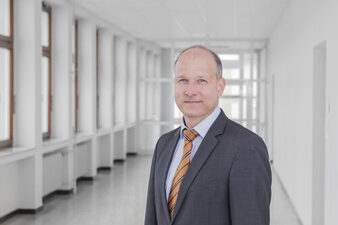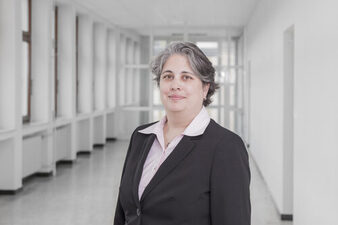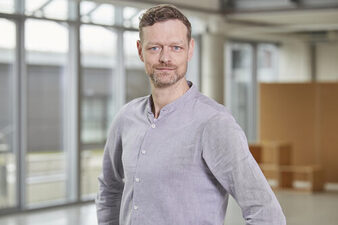Inspired and supported by the energy saving campaign "together less...", the digitization of a heating system was dealt with in a project-oriented manner as part of the course "Internet of Things" in the Master's degree program in Computer Science (Opens in a new tab) . The aim of the teaching project was to develop and prototype the digitalization of the heating system using Internet of Things (IoT) methods using the example of IDiAL 's Otto-Hahn-Str. 23 (OHS23) institute building. The building is heated by a gas central heating system to which over 100 radiators are connected. The requirements of the various stakeholders were developed based on user stories.
For example, all users should be able to set the temperature in their rooms according to their needs and create individual heating plans, with minimum and maximum room temperatures being specified by the system. Users should also be able to control their room heating while on the move, for example if they are ill and want to prevent the heating Master's degree program in Computer Science (Opens in a new tab) . The aim of the teaching project was to develop and prototype the digitalization of the heating system using Internet of Things (IoT) methods using the example of IDiAL(Opens in a new tab) 's Otto-Hahn-Str. 23 (OHS23) institute building. The building is heated by a gas central heating system to which over 100 radiators are connected. The requirements of the various stakeholders were developed based on user stories.
For example, all users should be able to set the temperature in their rooms according to their needs and create individual heating plans, with minimum and maximum room temperatures being specified by the system. Users should also be able to control their room heating while on the move, for example if they are ill and want to prevent the heating from running unnecessarily. The operator of the building should be able to call up information on gas consumption and heating parameters such as flow and return temperatures at any time via the Internet.
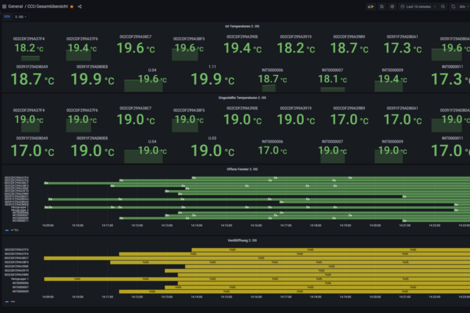
The students then used the requirements to develop a digitalization concept with an IoT system architecture. The architecture was designed in such a way that devices from different technologies and manufacturers can be easily integrated into the software. MQTT was selected as the protocol, which is widely used in the IoT sector and is directly supported by most device manufacturers. In addition to the needs-based digital control of the temperature of each individual room, the possible optimization of the heating settings was also part of the concept. In order to be able to directly analyse the reduction in gas consumption and thus CO2 emissions, the building's analogue gas meter was digitized using a pulse meter. In addition to recording the gas consumption of the heating system, the flow and return temperatures of the individual heating circuits were also to be recorded by sensors and stored in a time series database in order to be able to derive possible optimizations.
The actual implementation of the developed concept was carried out during the university-wide block week in November 2022. During the block week, the concept was implemented in terms of software and hardware. The software development was based on GitLab CI/CD, which generated the current software version from the source code and made it available as a Docker container in a virtual machine so that an up-to-date version was always available during the tests. Sensors and microcontrollers were installed in the boiler room and sample rooms (meeting room, workshop, laboratories, offices) were equipped with radiator thermostats, window sensors and wall thermostats. Both conventional devices with disposable batteries and radiator thermostats with rechargeable batteries are being tested. Furthermore, radiator thermostats are being tested that work without batteries and obtain the energy they need from the temperature difference between the flow temperature and the room temperature using energy harvesting.
The concept was successfully implemented by the students, with the result that the entire OHS23 building was equipped with digital radiator thermostats at the end of the teaching project, the costs of which were borne by IDiAL. In order to also test the use of digital heating in other room and building types, two seminar rooms in the Faculty of Social Sciences in EFS38a were equipped with digital radiator thermostats, window contacts and wall thermostats.

